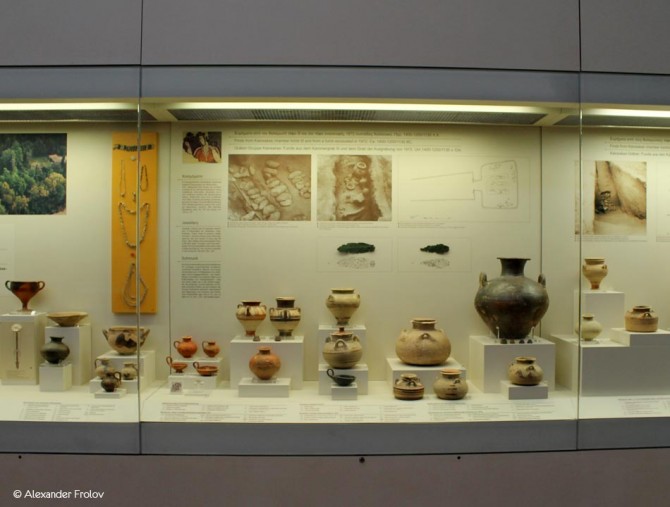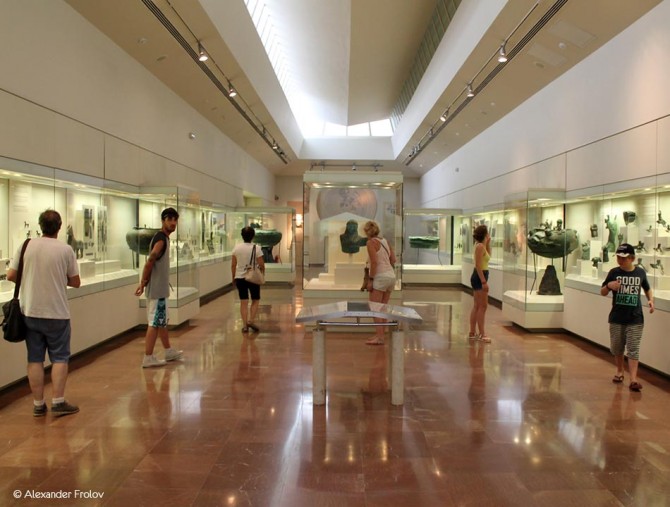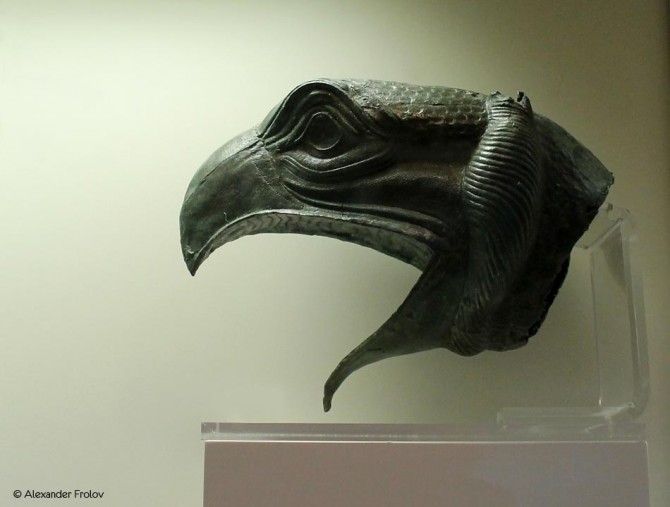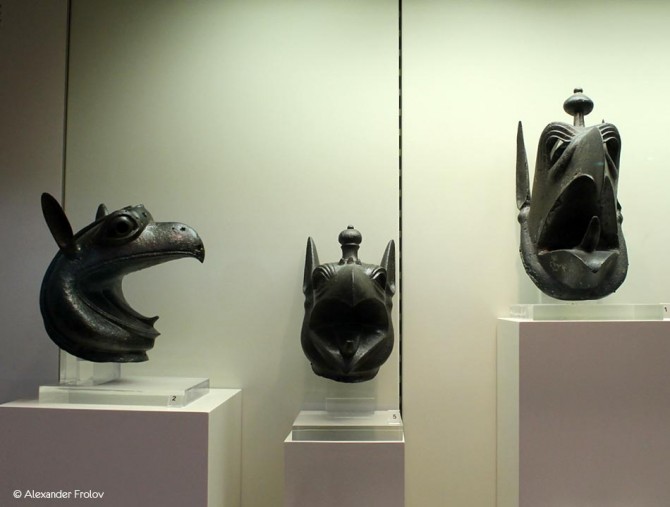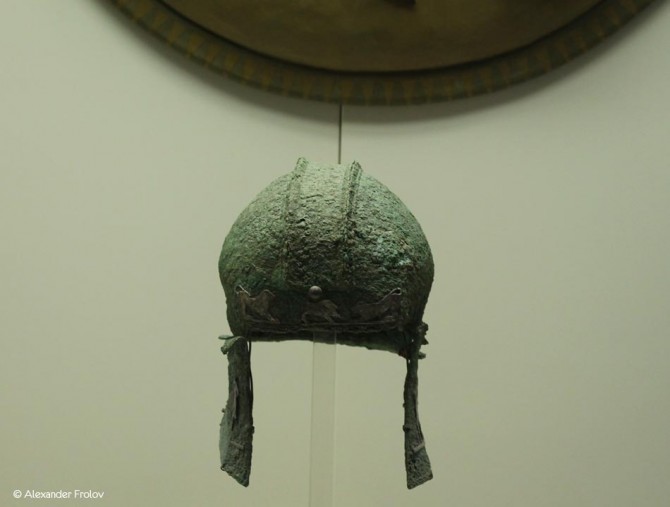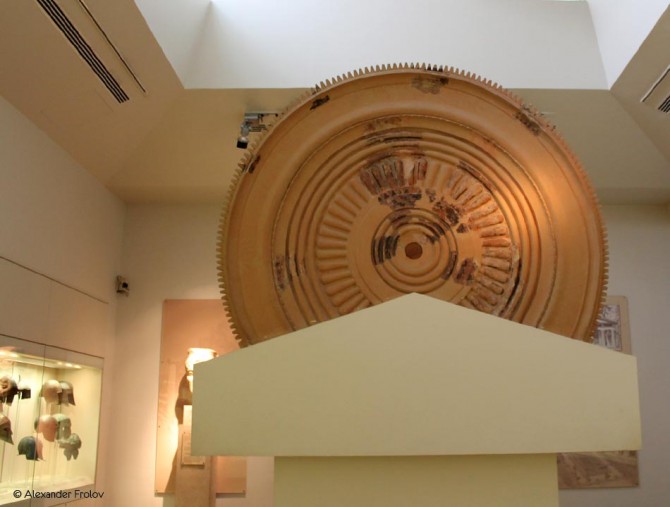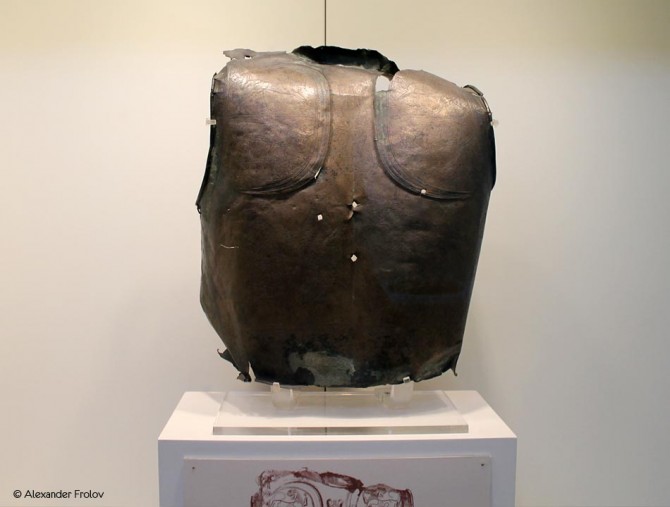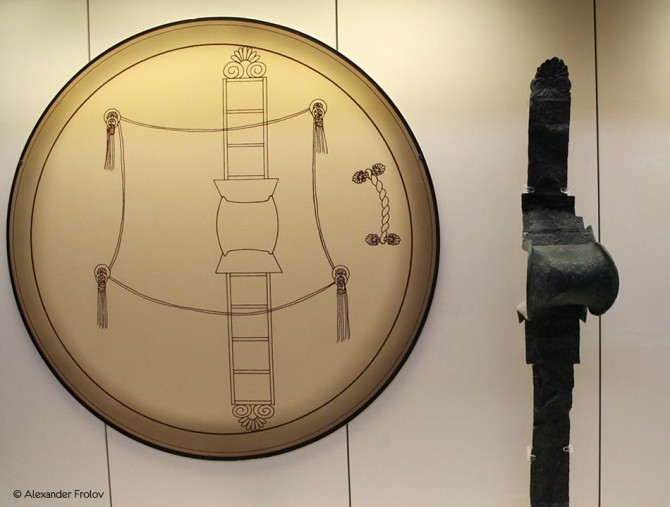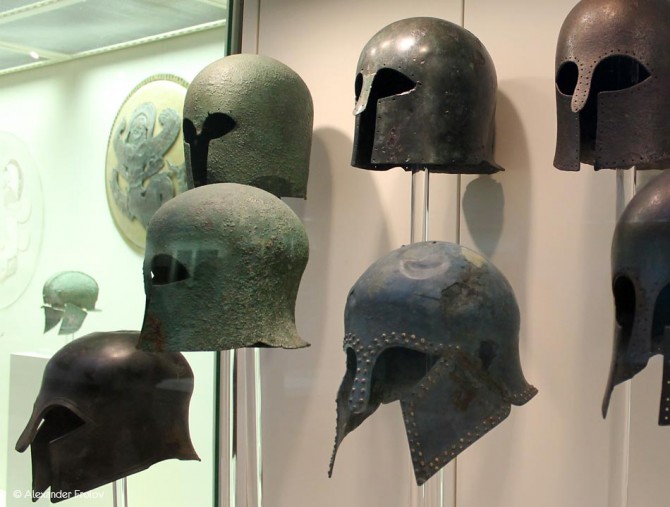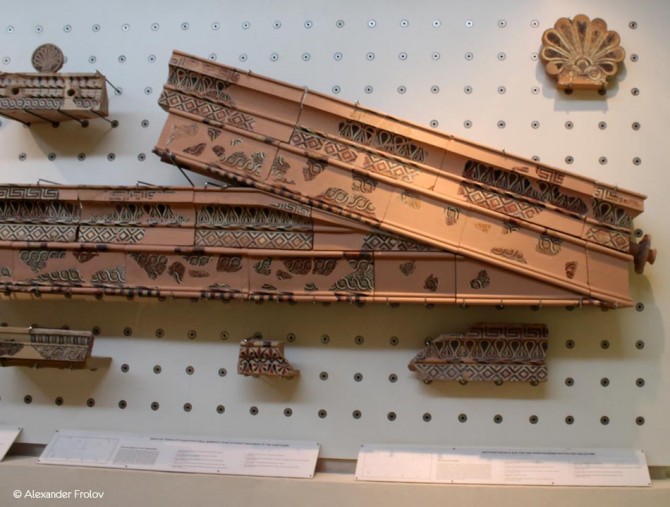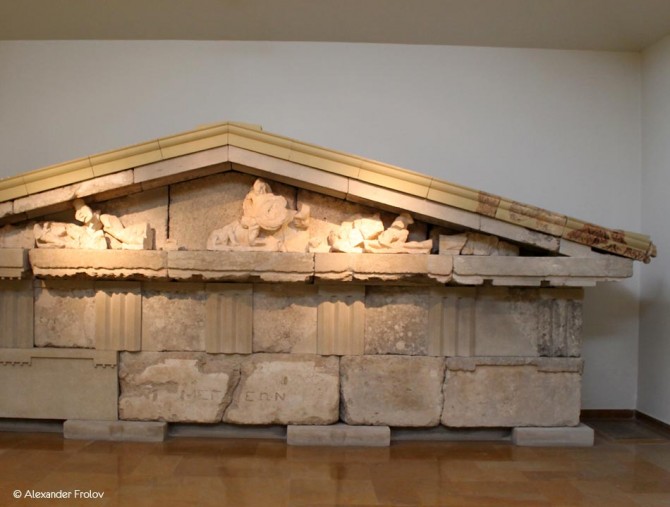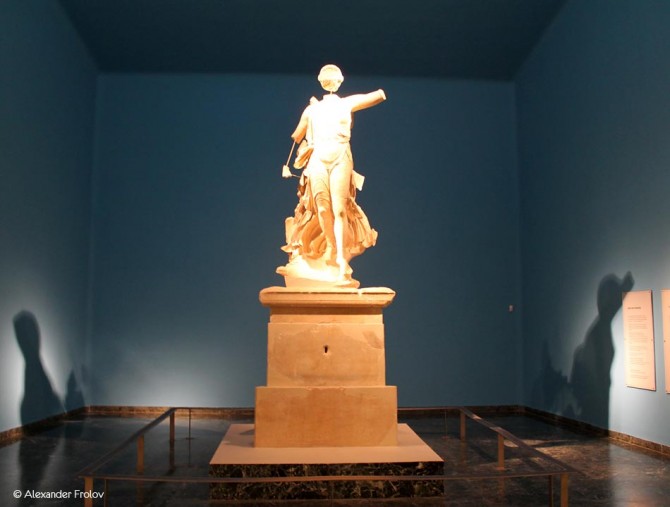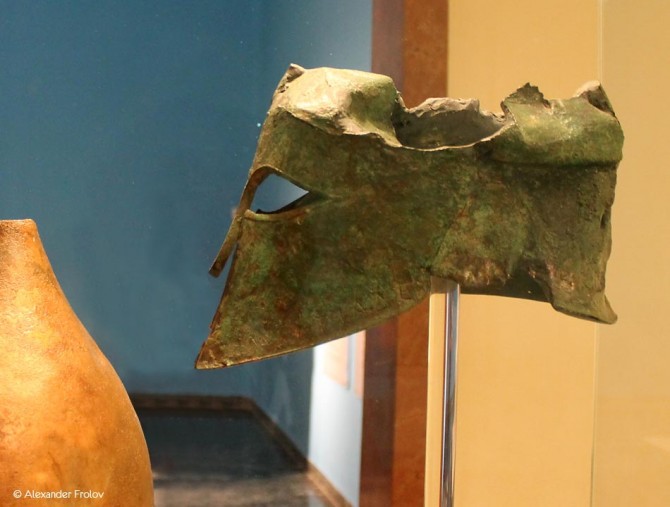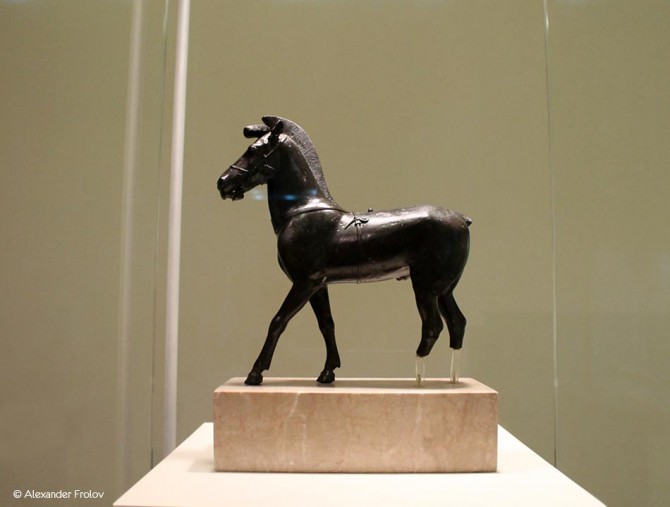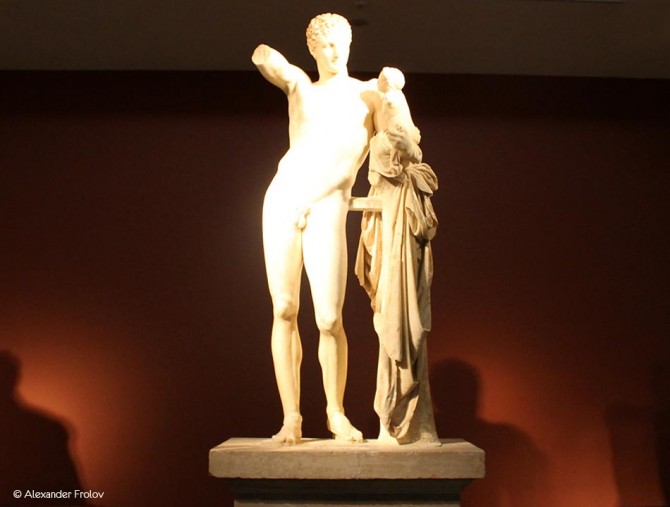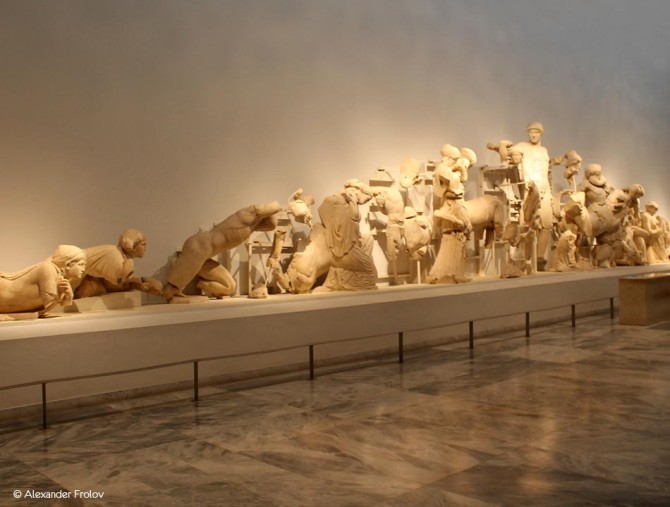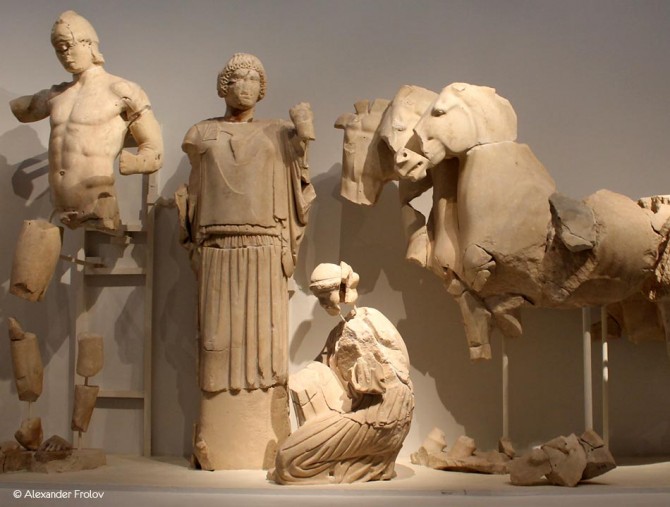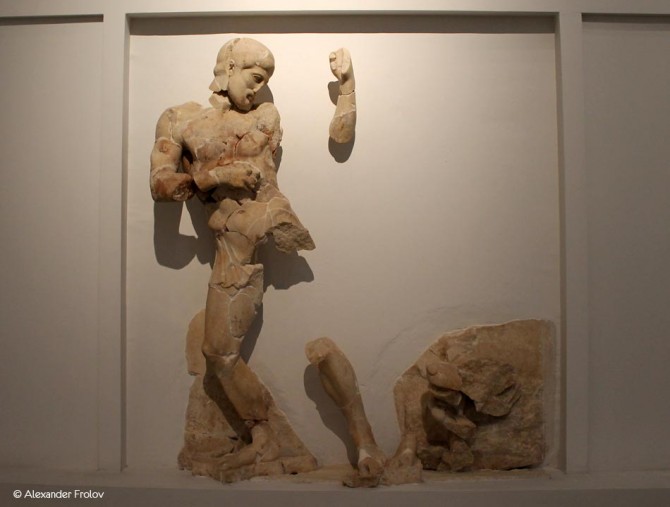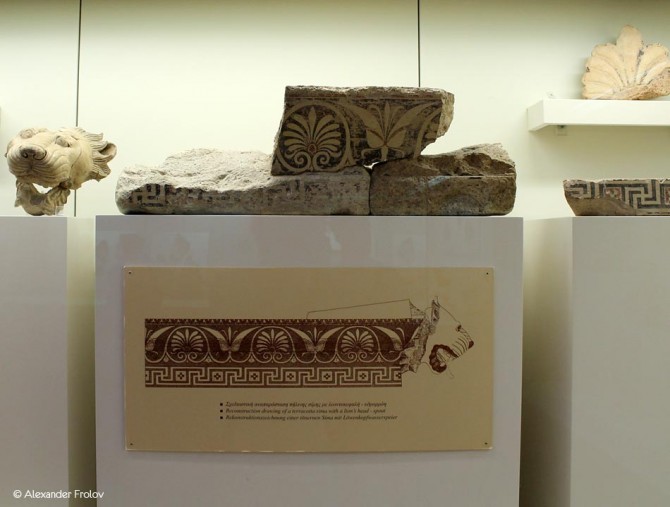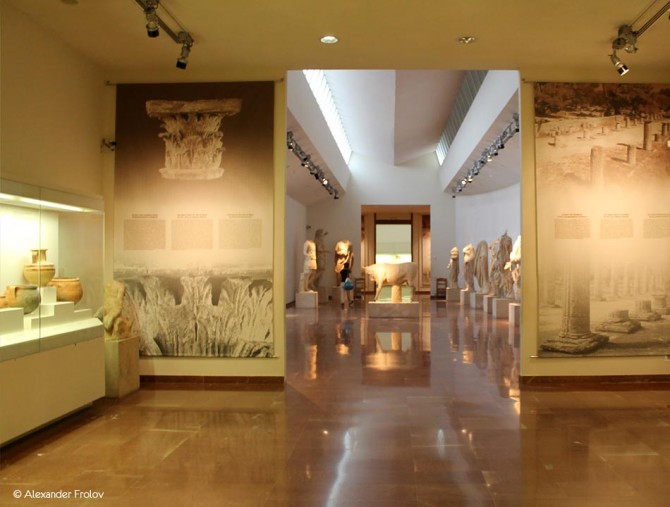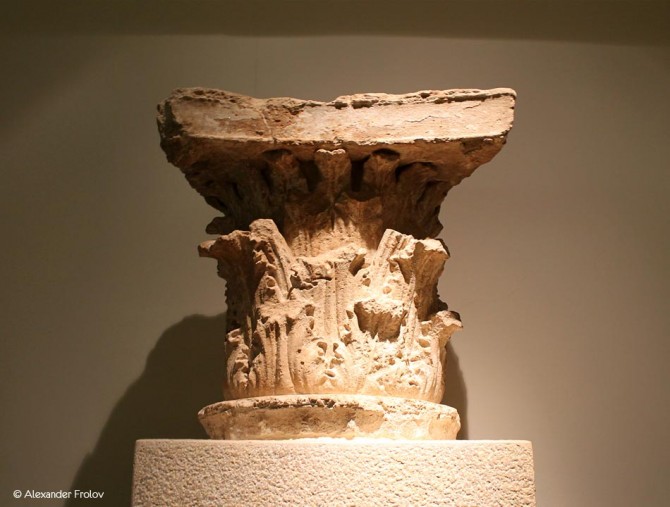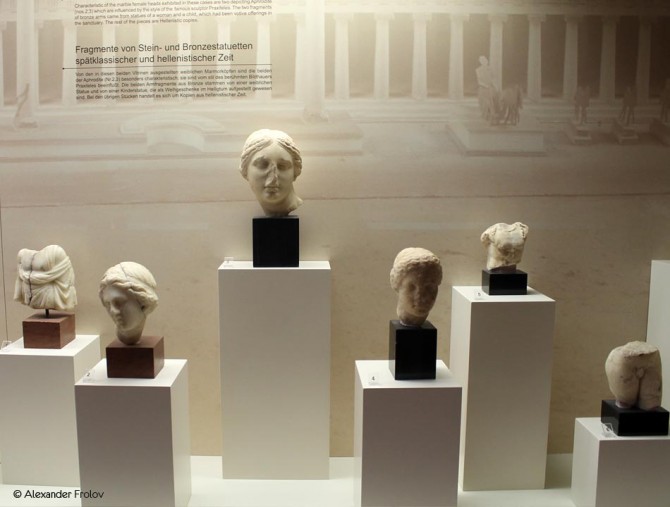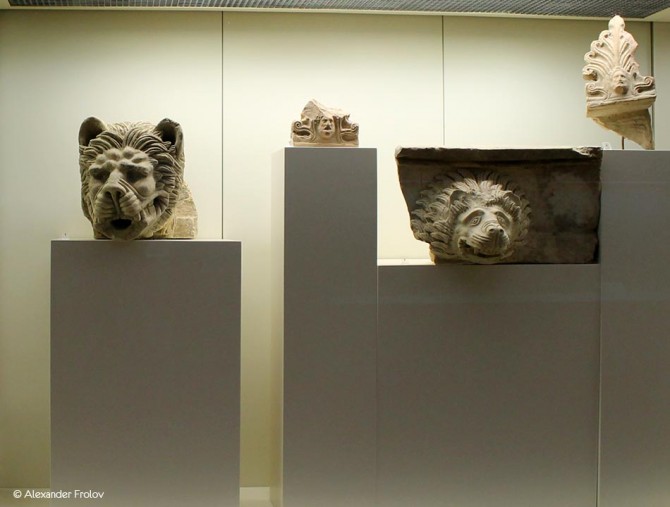Археологический музей Древней Олимпии
Музей был основан в XIX веке. Так называемый Старый музей Олимпии представлял собой неоклассическое здание, возведенное на холме западнее Альтиса. Средства для строительства предоставил известный греческий филантроп Андреас Сингрос. Однако в 1885 году музей сильно пострадал от землетрясений, которыей обрушились на район. Кроме того, начать строительство нового здания для музея заставили новые богатые находки Германской археологической школы.
Современное здание музея было построено в долине к юго-западу от холма Кронион по проекту архитектора Патроклоса Карантиноса в период между 1966 и 1975 годами. Официальное торжественное открытие нового музея состоялось в 1982 году при личном содействии и участии министра культуры Греции Мелины Меркури.
В музее двенадцать залов и экспозиция выстроена в хронологическом порядке. Первый зал посвящен доисторическому периоду. Это керамика и каменные орудия раннеэлладского периода второго и третьего тысячелетий, а также артефакты микенской эры: изделия из бронзы, глины и камня, ювелирные изделия, найденные в гробницах. Самым ценным экспонатом этого зала считается модель гробницы Пелопа, которую вы можете увидеть в центре зала.
Геометрический и архаический периоды представлены во втором зале. По большей части здесь представлены изделия из бронзы.
Третий зал посвящен позднеархаическому периоду, где можно увидеть посуду, бронзовые украшения и также детали украшений архитектурных памятников.
Примечательная коллекция терракоты расположена в зале 4. Наиболее значительным экспонатом этого раздела считается удивительный комплекс Зевса и Ганемиды.
В пятом по счету зале музея находятся самые важные эспонаты. Это мраморные скульптуры и метоп храма Зевса.
Ника Паниониоса – так называется выдающаяся скульптура классического периода. Она располагалась раньше рядом с храмом Зевса и была подарком Мессианцев после их победы над спартанцами, в битве при Сфактирии (421 год до н.э.). Именно тогда впервые в истории греческой скульптуры крылатая богиня изображена в полете. Она находится в шестом зале.
Следующий зал, седьмой по счету называется «Фидий и его мастерская». Фидий был величайшим скульптором древности. Созданная им из золота и слоновой кости статуя Зевса считается одним из семи чудес света. Его мастерская располагалась внутри древнего святилища и после падения Олимпии на этом месте был выстроен раннехристианский храм.
Скульптура, шедевр IV века до н.э. под названием “Гермес Праксителя” расположен в восьмом зале музея.
В девятом зале представлены артефакты позднего классического и эллинистического периодов.
Последние два зала посвящены Римской эпохе. Один из важнейших экспонатов – это скульптура из Нимфея Герода Аттика. В двенадцатом зале можно увидеть артефакты, связанные с падением этого выдающегося святилища.
Как добраться до Древней Олимпии:
- на машине из Афин (290 км) по трассе А7
- на машине из Коринфа (186 км) по трассам Коринф-Триполи А7/Е65 и Е074
- на машине из Пиргоса (18,7 км)
- на автобусе из Афин до Пиргоса (далее на местном автобусе) с автовокзала Кифисью, тел. автовокзала в Пиргосе: +30 26210 20 600-1
Цена билета: 6 евро, 3 евро (льготный), комплексный билет для археологических раскопок и музея: 9,5 евро
Часы работы: 8:00-15:00 ежедневно
Фото и текст: Александр Фролов
The Archaeological Museum of Olympia
It is one of the most significant museums of its kind, since it presents, through its exhibits, the long history of the Sanctuary of the Ancient Olympia. This glorious sanctuary was dedicated to Zeus, the father of the Gods, and it was the birthplace of the Olympic Games. So, as you can imagine, the amazing exhibits of the museum are just a drop in the ocean of the grandeur and the richness that characterized this sanctuary.
Although all the exhibits are priceless and exchellent samples of the Ancient Greek art, what stands out is the collection of sculpture, which actually made this museum so famous. Equally important is the wonderful collection of bronze objects, including weapons, statuetes and other artifacts, which is considered as the richest of its kind in the world. Fine pottery, exquisite mosaics, precious jewels and impressive small finds are also included in the imposing permanent collection of the museum.
With the exhibits arranged in chronological order, the permanent collection of the museum extends in 12 rooms, describing us step by step the history of the most important sanctuary of the Ancient Greece. Are you ready for a small tour?
“The Prehistoric Period of Olympia” is the first section of the collection, which introduce us to the history of Olympia, with exhibits from the Prehistoric Era: Pottery and stone tools, especially from the Early Elladic Era II and III (2700-2000 BC) and finds from the Mycenean Era (such as clay, stone, bronze objects and jewelery from chamber tombs discovered in the museum area). However, the most important exhibit of this section is the model of the tomb of Pelops (Early Elladic Era), which stands in the middle of the room. (Gallery 1).
“Geometric and Archaic Periods” is the next section which is housed in the Gallery 2. What will you see here? The rich collection of bronze objects from the Geometric and Archaic Period, which were offerings. Actually, this is just a small part of the large bronze collection of the museum, which is, as we have already mentioned, the richest of its kind worldwide.
The “Late Archaic period and architectural sculpture” is the theme of the Gallery 3, which houses pottery, bronze ornaments and utensils, and some of the most remarkable architectural parts of various monuments that bear painted decoration.
“Strict Style” is the name and the concept of the 4th section of the museum’s collection. in the Gallery 4, which is dedicated to the excellent samples of large-scale terracota. The most significant exhibit of this section is the amazing complex of Zeus and Ganymides.
The Gallery 5 is the house of the “The sculpted decoration of the temple of Zeus”. This gallery actually presents the most important exhibits of the museum, which are the unique marble pedimental sculptures and the metopes of the magnificent temple of Zeus.
“The Nike of Paionios” is one of the finest sculptures of the Classical Period, and also the name of the section that is housed in the Gallery 6. This glorious scupture (work by the ssculptor Paionios) was standing next to the temple of Zeus and was a gift of the Messeneans and the Nafpactians after their victory against the Spartans, in the battle of Sfaktiria ( 421 BC). The winged goddess is depicted the time of flight (for the first time in the history of the Greek sculpture), while she was descending from Olympus to blair the triumph of the winners.
“Pheidias and his workshop” is the theme of the Gallery 7. Pheidias was one of the greatest sculptors of the antiquity. His scrumptious chryselephantine statue of Zeus was one of the 7 wonders of the ancient world. His workshop was inside the sanctuary and after the decline of the Ancient Olympia, an Early Christian Church was built over its ruins.
“The Hermes of Praxiteles” is one of the most famous sculptures of all times, a real masterpiece of the 4th century BC art. It is also the name of the section that houses it, in the Gallery 8.
The Gallery 9 houses pottery, sculpture and architectural elements of the Late Classical and Hellenistic periods under the title “Late Classical and Hellenistic periods”.
The large collection of the Roman sculpture adorn the Galleries 10-11 and the namesake section. Among them, the impressive statuary from the Nymphaion of Herodes Atticus stands out.
“The Last Years of the Sanctuary’s Life” are presented in Gallery 12, containing objects of terracotta, bronze and iron, from the years when the legendary sanctuary was about to be abandoned.
The Archaeological Museum of Olympia, Archaeological Site of Olympia, Olympia, prefecture of Elis. Visiting hours: 8:00-15:00. Last entry 15 minutes before the closure. Ticket prices: 6 , 3 euros. Unified ticked: 9, 5 euros. Valid for: Archaeological Museum of Olympia, Archaeological Site of Olympia
How to get there: By car from Athens (distance 290 km) via A7, from Corinth (distance 186 km) via A/D Corinth-Tripoli/A7/E65 and E074, from Pyrgos (distance 18,7 km) via E074. By bus from Athens (and other Greek cities) to Pyrgos and from there to Olympia. Kiffisou bus station (100 Kiffisou street, Athens), tel.: +30 210 51 34 110-1. Pyrgos bus station, tel.: +30 26210 20 600-1.
Τext: Marilou Pantazi


